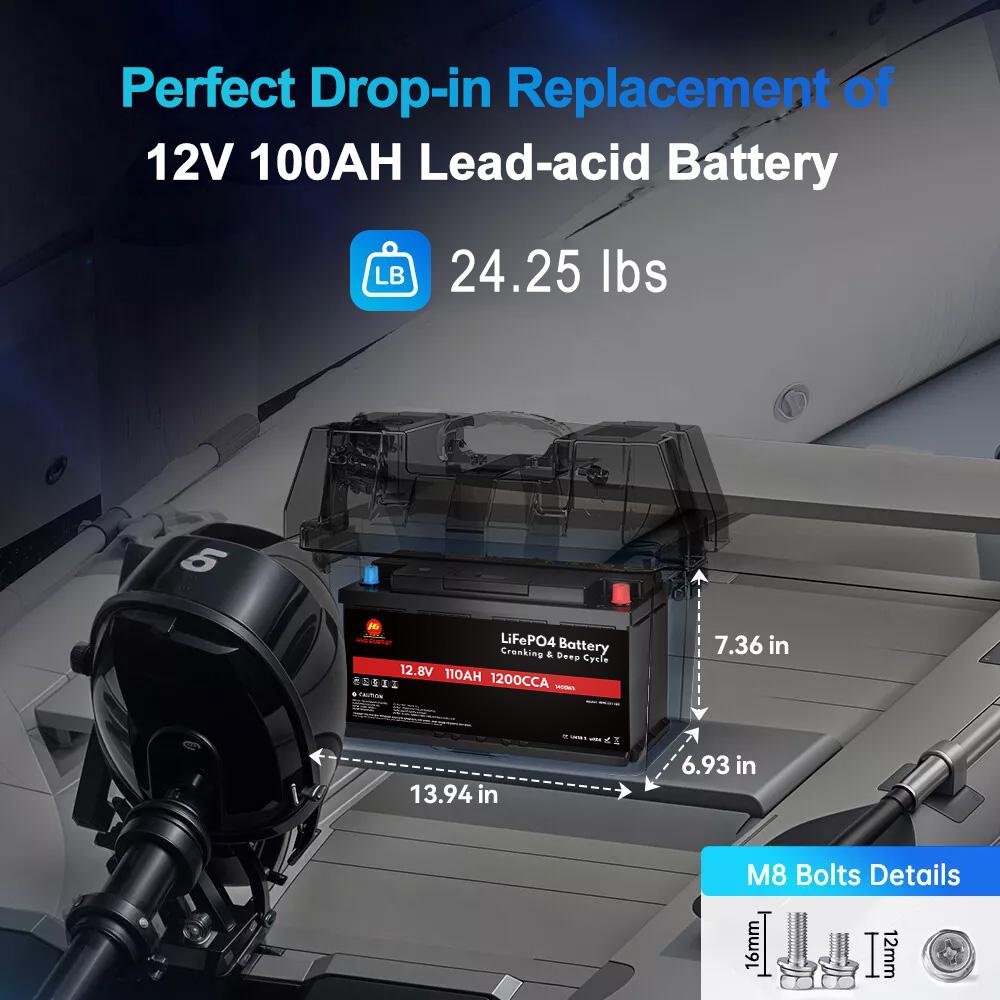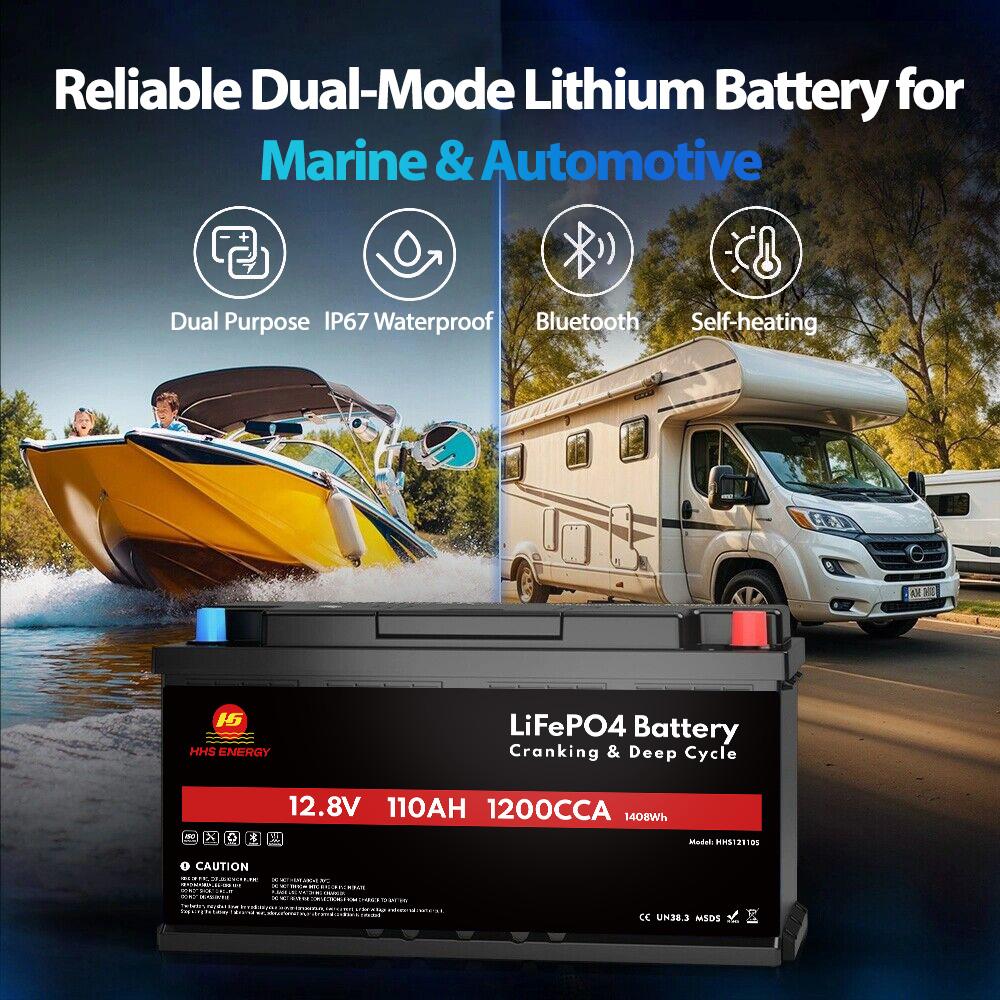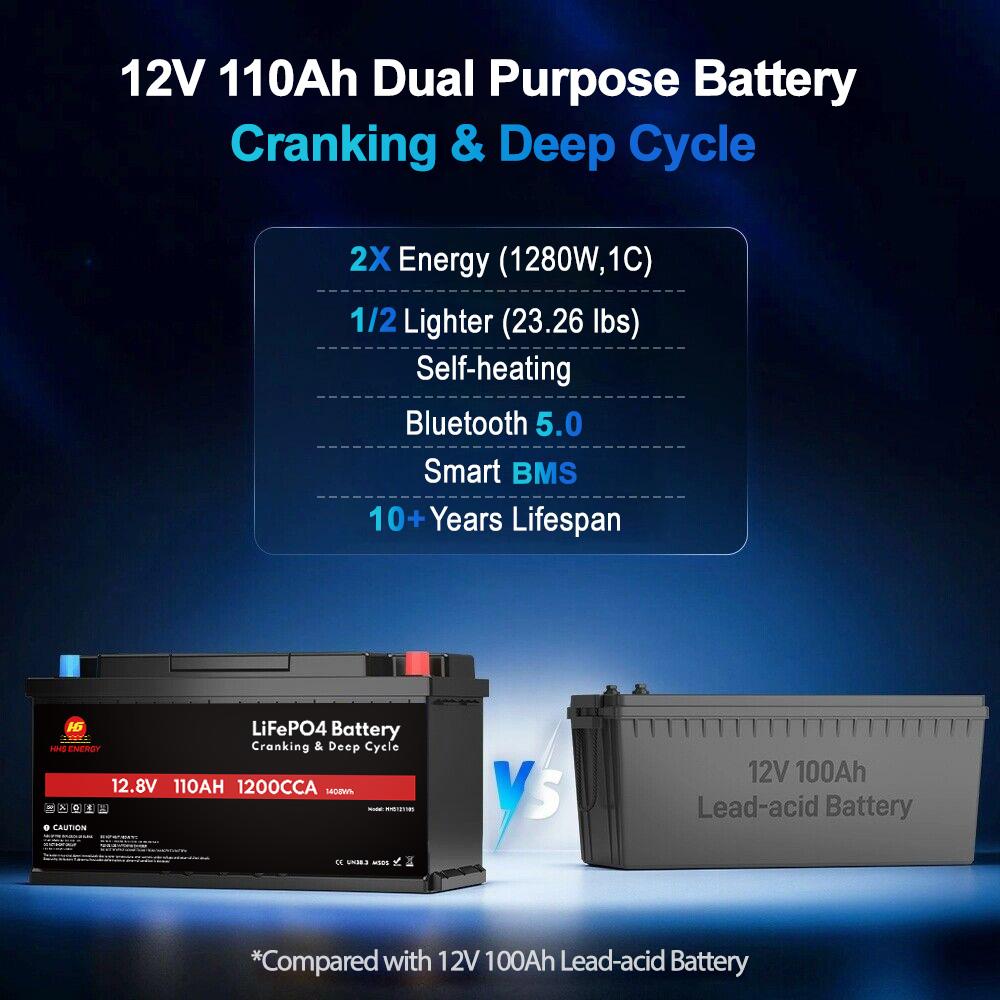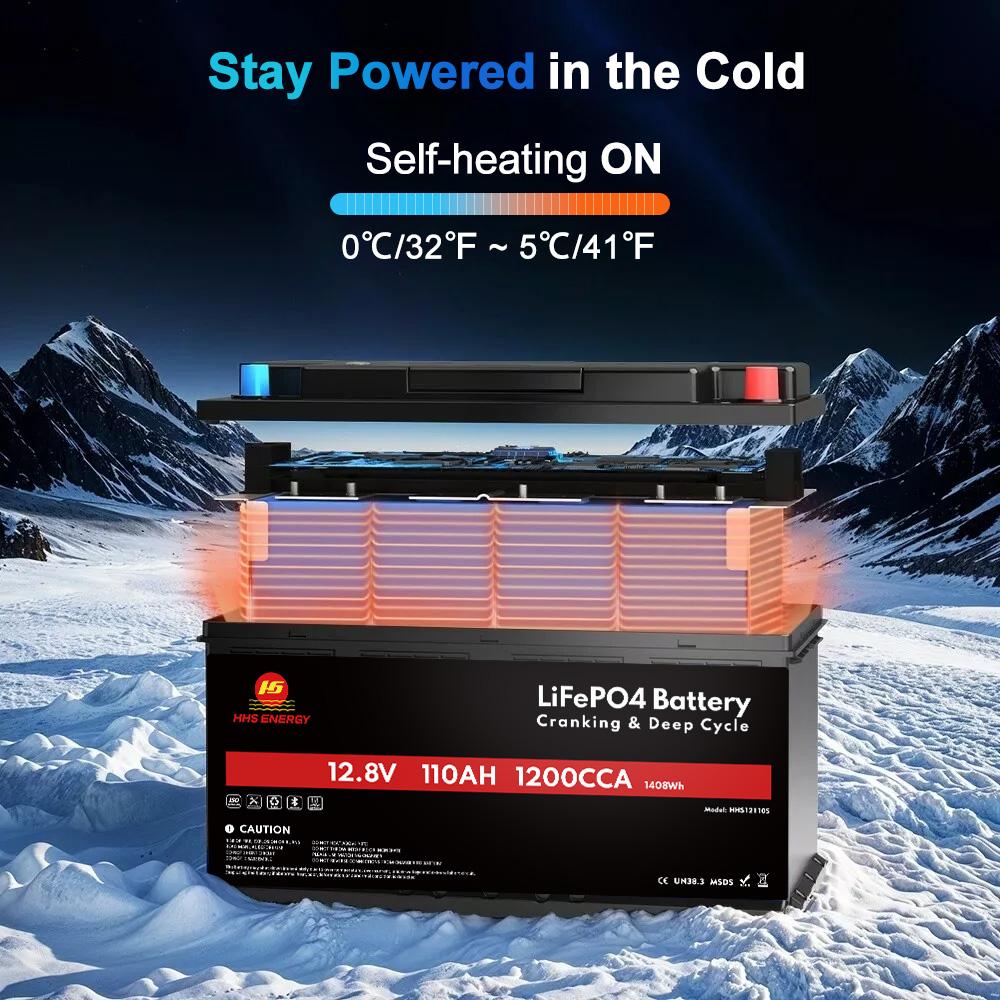In the world of deep-cycle and hybrid battery systems, Group 31 batteries hold a special place. Known for their robust size, high capacity, and versatility, they bridge the gap between compact Group 24 units and massive battery banks. But as technology advances, many forward-looking users are choosing LiFePO₄ (lithium iron phosphate) versions to take full advantage of modern battery performance.
This guide explores what Group 31 batteries are, why they remain relevant, and how HHS ENERGY is redefining them with advanced lithium designs geared for the demands of marine, RV, solar, and industrial applications.

“Group 31” refers to a standardized battery case size defined by the Battery Council International (BCI). The designation covers the physical dimensions—not the chemistry or capacity. Typical Group 31 specs include:
Dimensions: roughly 13 in × 6.8 in × 9.4 in (length × width × height)
Common capacity ranges: 95–125 Ah in many lead-acid configurations
Because of its larger size compared to mid-range groups, Group 31 is often used where higher capacities and loads are involved. Traditionally used in marine, trucking, and heavy-duty systems, it is now being reimagined with newer chemistries.
Group 31 batteries are available in multiple chemistries:
Flooded Lead-Acid (FLA) – classic, budget option but needs maintenance
AGM / Sealed Lead-Acid – maintenance-free, leak-proof
LiFePO₄ (Lithium Iron Phosphate) – modern, high-performance, long-life

Because of its balance of size and capacity, Group 31 batteries find uses in many demanding contexts:
Marine / Boating: powering trolling motors, navigation, lights, bilge pumps
RVs & Campers: supporting inverters, refrigerators, lighting, and off-grid usage
Solar / Off-grid Systems: battery banks for energy storage, often paired with panels or hybrid systems
Commercial Trucks / Heavy Vehicles: dual-purpose use—starting and auxiliary loads
Industrial / Backup Power: emergency systems, UPS units, remote installations
Group 31 hits a sweet spot: more capacity than smaller groups, but still manageable for many installations.

While traditional lead-acid (flooded or AGM) versions of Group 31 have served reliably, LiFePO₄ offers substantial advantages that make it the premium choice today—especially from a brand like HHS ENERGY.
Lead-acid often lasts 300–500 cycles before significant capacity loss. A well-designed LiFePO₄ Group 31 battery can deliver 3,000–5,000+ cycles, dramatically extending service life.
LiFePO₄ is significantly lighter—often 50% or more weight saving relative to equivalent lead-acid. That reduces system strain and improves overall efficiency.
Lead-acid usually limits depth-of-discharge to about 50%; LiFePO₄ in deep-cycle designs safely supports 80–100% discharge, offering double usable energy in many cases.
Lithium maintains near-flat voltage across discharge. Lead-acid sags under heavy loads, degrading performance for motors and electronics.
No watering, no corrosion, no gases. LiFePO₄ chemistry is stable and safer under abuse. Ideal for enclosed or off-grid usage.
Quality LiFePO₄ systems can accept higher charge currents safely, shortening recharge time dramatically compared to lead-acid.

Here’s what an HHS ENERGY LiFePO₄ Group 31 battery offers (hypothetical/sample specs):
Nominal Voltage: 12.8 V
Capacity Options: 100 Ah, 120 Ah
Cycle Rating: ≥ 4,000 cycles at 80% DOD
BMS Protection: Overcharge, over-discharge, over-temperature, short circuit, cell balancing
Current Capability: Continuous & surge current designed for motors
Operating Temperature: –20 °C to +60 °C
Weight: Typically ~12–14 kg (variation by model)
Busable: Series / parallel combinations for higher voltage or capacity
Communication: Some models may support Bluetooth / CAN for monitoring
These features make HHS’s Group 31 LiFePO₄ battery a top option for those seeking performance and reliability.

When choosing a Group 31 battery—especially lithium—consider the following criteria:
Energy Demand / Load Profile
Estimate your watt-hour usage (volts × amps × hours). Match capacity with margin.
Peak / Surge Current Requirements
Motors (e.g. trolling or inverters) demand surge current. Ensure the battery can handle peaks.
Depth of Discharge (DoD)
Plan your system around how much usable energy you’ll draw. Lithium lets you go deeper safely.
Temperature Conditions
If in extreme climates, choose packs with thermal management or safe temperature limits.
Physical Fit & Mounting
Confirm dimensions, mounting points, and secure fixing.
BMS and Safety
Ensure robust protection and balancing features built-in.
Charger Compatibility
Use chargers compatible with LiFePO₄ rather than lead-acid profiles.
Warranty and Support
Look for strong warranty terms and responsive technical support.

Always match sources and grounds properly
Use heavy-gauge cables to reduce voltage drop
Fuse or circuit protection is required close to battery terminals
Avoid short circuits; maintain insulation
First charge fully before use
Monitor battery temperature under load
Users across boating and RV forums note the dramatic improvement when upgrading from Group 31 AGM to LiFePO₄:
“Swapped my trolling bank to LiFePO₄ — now full-day runs are easy and voltage stays rock-solid.”
“Installed a 120Ah LiFePO₄ Group 31 in my RV; fridge, pumps, and lights all run strong for two nights.”
In head-to-head comparisons, a lithium Group 31 lasting 4,000 cycles can outlast three or four lead-acid replacements, justifying the premium.
Q: Can a LiFePO₄ Group 31 battery start an engine?
A: Many are dual-purpose, but true starting batteries still excel at high short-term current. Use a hybrid design if you need both starting and deep-cycle.
Q: Can I cluster multiple Group 31 batteries?
A: Yes. You can combine in series (for higher voltage) or parallel (for more capacity), as long as they match specs.
Q: What about cold weather performance?
A: LiFePO₄ does better than lead-acid in cold discharge, but charging below freezing may require protective features or warming.
Q: How long will the battery last?
A: Expect 8–12 years or more, depending on usage and environment.
Group 31 remains a powerful and versatile battery form factor. With LiFePO₄ technology, it gains longevity, efficiency, reliability, and performance. HHS ENERGY’s vision upgrades this classic platform into a forward-looking power solution suited for marine environments, RVs, solar systems, and more.
By opting for a high-quality LiFePO₄ Group 31 battery today, you invest in years of consistent usage, minimal maintenance, and lower total cost.